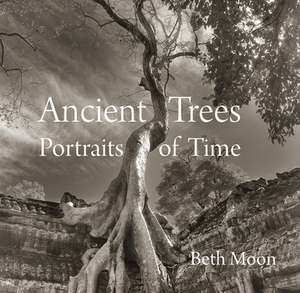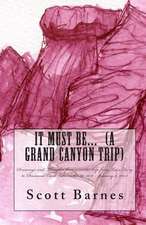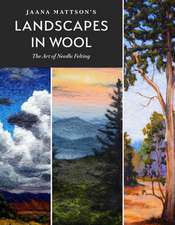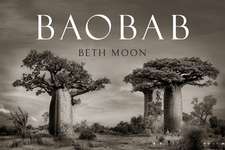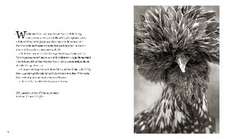Ancient Trees: Portraits of Time
Autor Beth Moonen Limba Engleză Hardback – 8 sep 2014
Captivating black-and-white photographs of the world’s most majestic ancient trees.
Beth Moon’s fourteen-year quest to photograph ancient trees has taken her across the United States, Europe, Asia, the Middle East, and Africa. Some of her subjects grow in isolation, on remote mountainsides, private estates, or nature preserves; others maintain a proud, though often precarious, existence in the midst of civilization. All, however, share a mysterious beauty perfected by age and the power to connect us to a sense of time and nature much greater than ourselves. It is this beauty, and this power, that Moon captures in her remarkable photographs.
This handsome volume presents nearly seventy of Moon’s finest tree portraits as full-page duotone plates. The pictured trees include the tangled, hollow-trunked yews—some more than a thousand years old—that grow in English churchyards; the baobabs of Madagascar, called “upside-down trees” because of the curious disproportion of their giant trunks and modest branches; and the fantastical dragon’s-blood trees, red-sapped and umbrella-shaped, that grow only on the island of Socotra, off the Horn of Africa.
Moon’s narrative captions describe the natural and cultural history of each individual tree, while Todd Forrest, vice president for horticulture and living collections at The New York Botanical Garden, provides a concise introduction to the biology and preservation of ancient trees. An essay by the critic Steven Brown defines Moon’s unique place in a tradition of tree photography extending from William Henry Fox Talbot to Sally Mann, and explores the challenges and potential of the tree as a subject for art.
Beth Moon’s fourteen-year quest to photograph ancient trees has taken her across the United States, Europe, Asia, the Middle East, and Africa. Some of her subjects grow in isolation, on remote mountainsides, private estates, or nature preserves; others maintain a proud, though often precarious, existence in the midst of civilization. All, however, share a mysterious beauty perfected by age and the power to connect us to a sense of time and nature much greater than ourselves. It is this beauty, and this power, that Moon captures in her remarkable photographs.
This handsome volume presents nearly seventy of Moon’s finest tree portraits as full-page duotone plates. The pictured trees include the tangled, hollow-trunked yews—some more than a thousand years old—that grow in English churchyards; the baobabs of Madagascar, called “upside-down trees” because of the curious disproportion of their giant trunks and modest branches; and the fantastical dragon’s-blood trees, red-sapped and umbrella-shaped, that grow only on the island of Socotra, off the Horn of Africa.
Moon’s narrative captions describe the natural and cultural history of each individual tree, while Todd Forrest, vice president for horticulture and living collections at The New York Botanical Garden, provides a concise introduction to the biology and preservation of ancient trees. An essay by the critic Steven Brown defines Moon’s unique place in a tradition of tree photography extending from William Henry Fox Talbot to Sally Mann, and explores the challenges and potential of the tree as a subject for art.
Preț: 272.16 lei
Nou
Puncte Express: 408
Preț estimativ în valută:
52.08€ • 56.56$ • 43.75£
52.08€ • 56.56$ • 43.75£
Carte disponibilă
Livrare economică 01-15 aprilie
Livrare express 18-22 martie pentru 70.01 lei
Preluare comenzi: 021 569.72.76
Specificații
ISBN-13: 9780789211958
ISBN-10: 0789211955
Pagini: 104
Ilustrații: black & white illustrations
Dimensiuni: 279 x 279 x 20 mm
Greutate: 1.25 kg
Editura: Abbeville Publishing Group
Colecția Abbeville Press
ISBN-10: 0789211955
Pagini: 104
Ilustrații: black & white illustrations
Dimensiuni: 279 x 279 x 20 mm
Greutate: 1.25 kg
Editura: Abbeville Publishing Group
Colecția Abbeville Press
Cuprins
Introduction
Beth Moon 7
Adapted to Endure: The Form and Function of Ancient Trees
Todd Forrest 9
Plates
Great Britain 17
United States 42
Israel 54
Socotra 56
Southern Africa 63
Cambodia 76
Captions 80
Eternity in Present Tense: Beth Moon and the Art of the Tree
Steven Brown 97
Acknowledgements 101
Index of Trees 103
Beth Moon 7
Adapted to Endure: The Form and Function of Ancient Trees
Todd Forrest 9
Plates
Great Britain 17
United States 42
Israel 54
Socotra 56
Southern Africa 63
Cambodia 76
Captions 80
Eternity in Present Tense: Beth Moon and the Art of the Tree
Steven Brown 97
Acknowledgements 101
Index of Trees 103
Recenzii
San Francisco Chronicle Holiday Gift Guide Selection
"A project with weight and lasting beauty…Ancient Trees provides the kind of thorough and thoughtful portrait that each of these majestic long-lived survivors deserves.” —Christian Science Monitor
“[Moon] creates magical images that in their blacks and whites, silvers and grays, capture the marvel of arboreal forms and textures . . . [a] jewel of a book.” —Booklist, Starred Review
"Ancient Trees: Portraits of Time is well named. One cannot look at Beth Moon's images of gnarled, overgrown trees and not feel the intrinsic gravity of time." —Printers Row Journal, Chicago Tribune
Featured in the Wall Street Journal's Weekend "Exhibit" spotlight
"Trees are notoriously hard to photograph, but Moon captures their individuality with reverent portrayals…these are lavish, awe-inspiring pictures...Crossing with ease between realms of natural history and art, this will appeal to all with even the mildest horticultural or photographic interests.” –Library Journal
“Beth Moon’s stunning images capture the power and mystery of the world’s remaining ancient trees. These hoary forest sentinels are among the oldest living things on the planet, and it is desperately important that we do all in our power to ensure their survival. I want my grandchildren—and theirs—to know the wonder of such trees in life and not only from photographs of things long gone. Beth’s portraits will surely inspire many to help those working to save these magnificent trees.”
—Dr. Jane Goodall
Notă biografică
Beth Moon, a photographer based in San Francisco, makes her exhibition prints exclusively with the platinum/palladium process, which affords the greatest possible permanence and tonal range. Moon’s work has been published widely in magazines, and she is represented by galleries in the United States, Italy, Israel, Brazil, and Dubai.
Extras
INTRODUCTION
Beth Moon
Time is the shape of an old oak as the winds caress and sculpt the bark, defining hardship and beauty. Time is the trunk that splits apart in great age to accommodate the tempest. Evidence of time is revealed in the furrowed bark of an ancient tree, gnarled, crooked, and beautiful.
Portraits of Change,
Portraits of Survival,
Portraits of Time.
I’d like to keep a clear picture, so if a tree is destroyed by storm, disease, greed, or lack of concern, I will have a record of its power and beauty for those who were not able to make the journey. I photograph these trees because I know words alone are not enough, and I want their stories to live on. I photograph these trees because they may not be here tomorrow.
I began this project while living in England, a country with an affinity for all things arboreal. From the first moment I saw an ancient yew, a love affair ensued. The United Kingdom has a high concentration of old trees, so it seems I was in the right place to start. My children were young at the time, and they often accompanied me on my travels, happy for the chance to explore new places.
Early in the project, I photographed the massive Bowthorpe Oak, one of the greatest British oaks. Its full crown of left green foliage was quite a sight to behold. Just six months later, part of the crown was lost when a violent storm tore a major limb to the ground, causing other branches to collapse into the tree’s hollow center.
Elsewhere I found ancient relics living in a state of neglect or destined for sacrifice by the logger’s chainsaw. These trees, taller than most buildings and older than many of our monuments, were often taken for granted. Equally disturbing is the threat of extinction many tree species are facing. For these reasons, I continued my work with a greater sense of purpose and urgency.
Why do we need old trees? Beyond the sublime, old trees are biologically critical. They contain superior genes that have enabled them to survive through the ages, resistant to disease and other uncertainties. Their genetic heritage is invaluable for future research and reforestation. Old trees store a significant amount of carbon above and below the ground. They serve as a reservoir for species such as lichen, and contain rich communities of plants, animals, and insects that depend on this unique habitat created only by the passage of time. The disappearance of old-growth forests may be one of the most serious environmental issues today. It is time to embrace a larger view of nature as a network of interwoven relationships.
Moving to the West Coast of the United States allowed me the opportunity to explore the ancient bristlecone pines and giant sequoias of California. Print sales allowed the further development of my work and trips to other continents. Planning was extensive. Some places could only be visited at certain times of the year. For example, the Yemeni island of Socotra, home to the remarkable dragon’s blood trees, is inaccessible for many months at a time due to strong monsoon winds. I also carefully considered the best season to photograph each particular tree. In the case of the baobabs of Madagascar, I felt they presented better with full crowns of foliage, which meant traveling there during the rainy season. On the other hand, many grand oaks photographed better during the winter months, when they were bare of leaves, allowing their wildly twisted branches and full trunks to be seen clearly.
In some countries, I was able to camp right under the trees I photographed, allowing me to take advantage of the last light of the day and the first rays of morning sun. Sleeping in the frankincense forest on Socotra, or in the salt pans of the Kalahari under giant baobab trees, was an experience unlike any other. I have never felt more vibrant and alive than on these occasions, my senses awakening to a landscape filled with birdsong and the light of stars.
Many of the trees I photograph would be chosen by botanists as the best example of their species; I chose trees that are unique in their exceptional size, incredible age, heredity, or folklore. Or sometimes it was an unconventional beauty that I found irresistible. Many of them had overcome obstacles in their effort to survive, their very forms a testament to their resiliency. All of them remarkable.
Few of these trees have signposts, and many have survived because they are out of reach of civilization, on mountainsides, private estates, remote islands, or protected land. Certain species exist only in a few isolated parts of the world. Wherever possible, I have listed the age of each tree, but this can be hard to determine accurately. Counting rings and carbon dating damages the trunk, and many old trees hollow out or appear to stop growing at certain stages. Moreover, tree growth often slows over time. Experts now agree that the best results are obtained by comparing the measurements of living trees to other examples of the same species that have been cut down already.
I have remained loyal to my Pentax 6.7 film camera, using it for the majority of these shots. The many steps involved in creating the final print are just as important to me as capturing the image. The process I use for exhibition prints is platinum/palladium printing. By using the longest-lasting photographic process, I hope to speak about survival—not only of man and nature, but of photography as well. For each print, I mix a tincture and I hand-paint onto heavy watercolor paper and expose to light. The metals are actually embedded into the fiber of the paper. A platinum print can last for centuries, drawing on the common theme of time and continuance, pairing photographic subject and process.
As I complete my work on this book, I cherish many fond memories. I have since taken other photographs that I am happy with, but these trees hold a very special place in my heart, as they are the sole reason I began to work with a camera in 1999. They were the seeds planted in me, the inspiration that took root and grew.
Beth Moon
Time is the shape of an old oak as the winds caress and sculpt the bark, defining hardship and beauty. Time is the trunk that splits apart in great age to accommodate the tempest. Evidence of time is revealed in the furrowed bark of an ancient tree, gnarled, crooked, and beautiful.
Portraits of Change,
Portraits of Survival,
Portraits of Time.
I’d like to keep a clear picture, so if a tree is destroyed by storm, disease, greed, or lack of concern, I will have a record of its power and beauty for those who were not able to make the journey. I photograph these trees because I know words alone are not enough, and I want their stories to live on. I photograph these trees because they may not be here tomorrow.
I began this project while living in England, a country with an affinity for all things arboreal. From the first moment I saw an ancient yew, a love affair ensued. The United Kingdom has a high concentration of old trees, so it seems I was in the right place to start. My children were young at the time, and they often accompanied me on my travels, happy for the chance to explore new places.
Early in the project, I photographed the massive Bowthorpe Oak, one of the greatest British oaks. Its full crown of left green foliage was quite a sight to behold. Just six months later, part of the crown was lost when a violent storm tore a major limb to the ground, causing other branches to collapse into the tree’s hollow center.
Elsewhere I found ancient relics living in a state of neglect or destined for sacrifice by the logger’s chainsaw. These trees, taller than most buildings and older than many of our monuments, were often taken for granted. Equally disturbing is the threat of extinction many tree species are facing. For these reasons, I continued my work with a greater sense of purpose and urgency.
Why do we need old trees? Beyond the sublime, old trees are biologically critical. They contain superior genes that have enabled them to survive through the ages, resistant to disease and other uncertainties. Their genetic heritage is invaluable for future research and reforestation. Old trees store a significant amount of carbon above and below the ground. They serve as a reservoir for species such as lichen, and contain rich communities of plants, animals, and insects that depend on this unique habitat created only by the passage of time. The disappearance of old-growth forests may be one of the most serious environmental issues today. It is time to embrace a larger view of nature as a network of interwoven relationships.
Moving to the West Coast of the United States allowed me the opportunity to explore the ancient bristlecone pines and giant sequoias of California. Print sales allowed the further development of my work and trips to other continents. Planning was extensive. Some places could only be visited at certain times of the year. For example, the Yemeni island of Socotra, home to the remarkable dragon’s blood trees, is inaccessible for many months at a time due to strong monsoon winds. I also carefully considered the best season to photograph each particular tree. In the case of the baobabs of Madagascar, I felt they presented better with full crowns of foliage, which meant traveling there during the rainy season. On the other hand, many grand oaks photographed better during the winter months, when they were bare of leaves, allowing their wildly twisted branches and full trunks to be seen clearly.
In some countries, I was able to camp right under the trees I photographed, allowing me to take advantage of the last light of the day and the first rays of morning sun. Sleeping in the frankincense forest on Socotra, or in the salt pans of the Kalahari under giant baobab trees, was an experience unlike any other. I have never felt more vibrant and alive than on these occasions, my senses awakening to a landscape filled with birdsong and the light of stars.
Many of the trees I photograph would be chosen by botanists as the best example of their species; I chose trees that are unique in their exceptional size, incredible age, heredity, or folklore. Or sometimes it was an unconventional beauty that I found irresistible. Many of them had overcome obstacles in their effort to survive, their very forms a testament to their resiliency. All of them remarkable.
Few of these trees have signposts, and many have survived because they are out of reach of civilization, on mountainsides, private estates, remote islands, or protected land. Certain species exist only in a few isolated parts of the world. Wherever possible, I have listed the age of each tree, but this can be hard to determine accurately. Counting rings and carbon dating damages the trunk, and many old trees hollow out or appear to stop growing at certain stages. Moreover, tree growth often slows over time. Experts now agree that the best results are obtained by comparing the measurements of living trees to other examples of the same species that have been cut down already.
I have remained loyal to my Pentax 6.7 film camera, using it for the majority of these shots. The many steps involved in creating the final print are just as important to me as capturing the image. The process I use for exhibition prints is platinum/palladium printing. By using the longest-lasting photographic process, I hope to speak about survival—not only of man and nature, but of photography as well. For each print, I mix a tincture and I hand-paint onto heavy watercolor paper and expose to light. The metals are actually embedded into the fiber of the paper. A platinum print can last for centuries, drawing on the common theme of time and continuance, pairing photographic subject and process.
As I complete my work on this book, I cherish many fond memories. I have since taken other photographs that I am happy with, but these trees hold a very special place in my heart, as they are the sole reason I began to work with a camera in 1999. They were the seeds planted in me, the inspiration that took root and grew.
